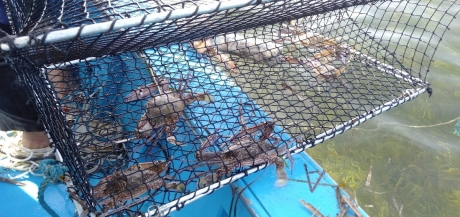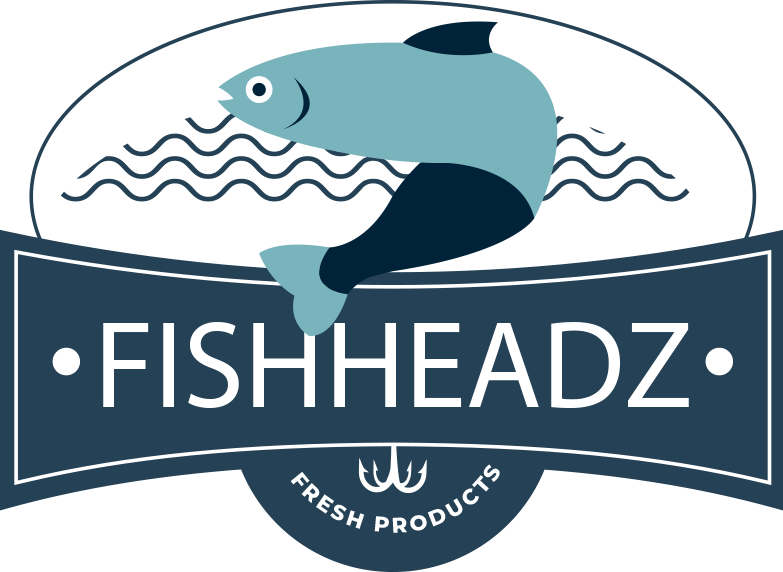"It eats everything, leaves nothing and reproduces very quickly," laments Mouradh, a fisherman from the Tunisian islands of Kerkennah. For the country’s fishers, the blue crabs that were being hauled out of the water, tangled up in their broken nets, were a disaster.
An invasive species introduced into the Mediterranean through the Suez Canal, the blue crab threatened the artisanal fishing techniques used along the Tunisian coastline, specifically damaging the gillnets and traps used in the Charfia (a traditional, fixed fishery system that blocks the path of fish and leads them to traps). With their sharp shells and claws, blue crabs ruin these fishing nets and feed on other fish species also caught in the nets or traps.
Blue crabs were first found off the Tunisian coast in 1993. By 2014, they began proliferating massively, causing significant damage to the coastal artisanal fishing sector, especially in the Gulf of Gabès in southeast Tunisia, where, during the high season, the blue crab represented more than 70 percent of the catch off this Mediterranean gulf.
These predatory crabs compete with indigenous species for space and food. They feed on all other species of fish, and its only natural predator, the octopus, is not enough to limit its spread. By disturbing the natural ecosystems, the blue crab has also negatively affected the yields of Tunisian women clam collectors, who were supported by FAO to improve their household incomes.


Left/top: The blue crab was initially a disaster for fishers, ruining nets and traditional fishing techniques. ©FAO/Valerio Crespi Right/bottom: FAO offered training and better traps to Tunisian fishers to take advantage of this new type of catch. Though not well-known locally, blue crab is very popular in other markets. ©FAO/Valerio Crespi
Not all bad
At the same time, this blue crab is the fifth most popular crab in the world market. It is especially sought out in the Asian, United States and Australian markets where it is featured on the menus of many restaurants.
Seeing the potential of turning this foe into a friend, FAO and the Tunisian government launched training sessions for the fishers in this region. Through the "Strengthening Governance and Development of Fisheries in Tunisia" project, FAO trained 90 fishers in Djerba, Gabès and Kerkennah.
Fishers received information sessions on the benefits of the blue crab and 1 500 multipurpose traps to allow them to catch the crab more easily. During FAO’s practical, hands-on training sessions, the fishers were able to compare the effectiveness of these large, mesh net traps against the traditional cylindrical crab pots.
In collaboration with Tunisian marine research center, the National Institute of Science and Technology of the Sea, FAO also produced a practical manual in French on blue crab fishing with multipurpose traps. It specifically addresses small-scale fishers, teaching them best practices in catching blue crabs.

FAO has helped the country develop a complete value chain for blue crab so that fishers and food producers in Tunisia can tap into this income source. ©FAO/Valerio Crespi
Turn a catastrophe into an opportunity
Beyond the advancement of fishing techniques in Tunisia, FAO has assisted the government in developing a complete value chain within this niche market. Good governance of fishing, that allows fishers to catch crabs of good quality while respecting the environment, has facilitated the marketing of the blue crab locally and internationally.
The first blue crab processing and marketing plant for the Asian market, created by the government in 2019 in the Kerkennah islands, triggered a mini economic boom in the area with 50 new jobs for plant technicians.
Valerio Crespi, FAO Fisheries and Aquaculture Officer explains, "This successful plant not only allowed fishers to diversify their sources of income, it also added value to an invasive species.”
The exports of blue crab during the month of May 2021 rose significantly, reaching 2 090.9 tons with a value of USD 7.2 million (about 19.6 million Tunisian dinars), while exports for the same period in 2020 was 796.1 tons with a value of USD 3.1 million (or 8.6 million dinars).
Private sector investments in blue crab processing plants have gone from simple packaging and freezing raw crabs to preparing cooked products in order to expand to markets in Asia, Italy, Spain and the Americas. Some food manufacturing plants in Zarzis are considering including cooked crab as one of their products to enter other markets. In fact, even in Tunisia where crab has never been a traditional dish or ingredient in cooking, this product is starting to appear on local menus due to its new availability in markets.
Though the consumption of fisheries’ products decreased during the pandemic period, fishers in the Gulf of Gabès are grateful that FAO assisted in turning an invasive species into a lucrative business and diversifying their income sources and economic opportunities.
Through the General Fisheries Commission for the Mediterranean, a regional fisheries management organization operating under the framework of the Organization, FAO is continuing to support governments and fishers in the region with a research programme and stock assessment of the two species of crabs that entered the Mediterranean Sea: the blue swimming crab (Portunus segnis) and the American blue crab (Callinectes sapidus). This research programme, involving all Mediterranean countries, will monitor the dispersion of these species along coastlines as well as determine their impact on fishery resources and assess their income potential in countries throughout the region.
